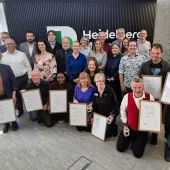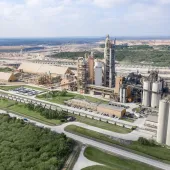Brussels conference marks end of RESTORE project

Leaders address project’s final conference and endorse its recommendations going forward
A WIDE cross-section of stakeholders from the minerals industry, local government, statutory agencies, conservation NGOs and the European Parliament (DG Environment) gathered at a conference in Brussels last month to mark the end of the RESTORE project and hear details of its concluding outputs and recommendations going forward.
Representatives from all seven of the project’s partners from the UK, Belgium, the Netherlands and Germany reported on the findings and outcomes of their work across four focus areas (policy, restoration best-practice, on-line information and mapping, and ecosystem services valuation) during the course of the project’s three-year life. Details of these findings, reports and speakers’ presentations are being uploaded on to the RESTORE website.
Following presentations and endorsements from key stakeholder figures, the RSPB’s chief executive officer, Mike Clarke (pictured), addressed the conference attendees to formally launch the project’s manifesto and present it to Lynn Boylan MEP and Patrick Murphy from DG Environment. The manifesto summarizes the project’s aims, findings and recommendations.
Key messages that came out of the conference were:
- The planning system across north-west Europe is enabling rather than inhibiting but is not being used to its full potential. Strong policy and protection to safeguard biodiversity in Europe should remain intact, as under the European Birds and Habitats Directives
- Biodiversity enhancement across north-west Europe should remain a priority
- Appropriate mineral site restoration – on a visionary, grand scale – can provide the vital lifeline to safeguard this biodiversity and the natural world
- A huge potential lies in the creation of ‘temporary nature’ at operational quarries
- The ecosystem services provided through quarry restoration can also create benefits for local economies and people, and help aid decision-makers
- Stakeholders should work in partnership to achieve the best results, including early involvement of local groups and communities
- The top 10 best-practice principles for biodiversity-led restoration resulting from the project work were presented and discussed
- The industry’s licence to operate is reinforced by restoring mineral sites with benefits for people and nature
- Appropriate and sustainable restoration for biodiversity need not be timely or costly.









